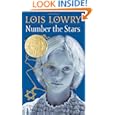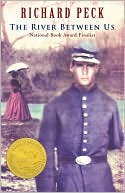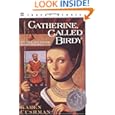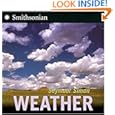
Bibliography -
Lowry, Lois. 1989. Number the Stars. New York: Laurel-Leaf Books. ISBN 9780440227533 .
Plot Summary –
This historical fiction is set in Copenhagen, Denmark in 1943. During WWII, the Germans are removing the Jews, and the Johansen family bravely steps up to help a young Jewish girl, Ellen Rosen, along with other Jews to escape to Sweden. The Johansens work with the Danish Resistance to help the Jews evade the Nazis. This fictional story based on true accounts is told through the experiences of Annemarie Johansen, a ten-year-old girl who is the best friend of Ellen Rosen. Annemarie must complete a task that requires courage and strength beyond her young years, or the efforts to rescue the Jews will fail. Through the love and support of her family, she finds the courage to complete her critical role.
Critical Analysis –
Lowry creates an astonishing tale of courage and friendship through vividly described settings, believable characters, and profound themes. The story takes place in two locations. One is the city of Copenhagen and the apartment building of the Johansens. In the beginning on page 2, the reader can picture being on a typical sidewalk in east Copenhagen. Lowry gives the name of the street name as “Osterbrogade”, and on this sidewalk, the reader sees ”small shops and cafes,” ”an elderly lady in black who carried a shopping bag made of string,” and ”A young woman pushing a baby in a carriage.” The reader is on the sidewalk with Ellen and Annemarie. Later the story moves to Uncle Henrik’s place that is ”The house by the sea” (p. 60). Once again, the reader is right there with the girls. Lowry describes it as, “little red-roofed farmhouse...very old...chimney crooked...small, shuttered windows tilted at angles...A bird’s nest, wispy with straw...a gnarled tree was still speckled with a few apples…” (p. 60). Reading Lowry’s descriptions is like looking at photographs of someone who has been there.
Additionally, the believable characters are so real that the reader can empathize with all of their emotions. Kirsti, Annemarie’s younger sister, behaves exactly as a five-year-old would. She is an innocent little girl who stubbornly and defiantly faces off with the German soldiers who are questioning her older sister. In contrast, Annemarie is a dutiful older sister and friend who is willing to do whatever she can to save her best friend even if it means she will suffer. After the Johansen’s have taken Ellen in their family to hide her from the Nazis, a terrifying event takes place in their apartment one night. German soldiers pound on the door and are looking for the Rosens. Ellen Rosen is posing as Annemarie’s older sister Lise. The reader is terrified when Annemarie realizes Ellen is wearing her Star of David necklace. They frantically try to remove it, but Annemarie must yank it off and hide it in her hand, which places herself in grave danger. After a frightening interrogation by the German soldiers, they rip a picture of Lise in two and leave somewhat satisfied. Annemarie relaxes and looks at her hand, “and saw that she had imprinted the Star of David into her palm” (p. 49). This imprint symbolizes the fact that Annemarie’s friendship with Ellen is imprinted on her heart, and she is willing to face possible devastating consequences for their friendship.
Annemarie’s courage does not end with this episode. She also shows tremendous courage toward the end when she has yet another encounter with German soldiers. She is sent on a mission to deliver a very important package to her Uncle Henrik who is hiding Jews on his boat and preparing to take them to safety in Sweden. She does not know exactly what the secret package contains, but follows her mother’s details to “act as a silly little girl” (p. 105) if stopped by the soldiers. Annemarie is very believable throughout this episode. Along the way, she reminds herself of stories that she told her little sister to offer comfort and distraction. Then when she meets up with the soldiers, just like a dutiful 10-year-old, she does exactly as her mother instructed, and the mission is a success. As a result of following her mother’s directions, she arrived in time to give the package to Uncle Henrik and all of the Jews he is hiding are boated off to safety. Among this group is the Rosen’s and Annemarie’s best friend, Ellen. Annemarie saves her best friend’s life, and her extreme courage is very believable in this carefully crafted narrative.
Furthermore, Lowry uses the powerful theme of Biblical friendship to make this historical fiction riveting. The Biblical references are impossible to ignore since the Rosens are Jewish. The title is a reference to God’s promise to Abraham that his descendents would be as plentiful as the number of stars, yet they are in danger of being annihilated as this story reveals. In the Bible, it is says that there is no greater love than to die for a friend, and Lowry illustrates the full realization of this intimate level of friendship. The Rosens are friends of the Johansens, and the Johansens risk everything including their lives to hide their daughter Ellen. Ultimately, they facilitate rescue of the whole family at great risk to themselves. In addition, the Danish Resistance works as a group to get the information out and set up rescues for Jewish families, and Peter, a member of the Danish Resistance, gives his life for the cause. Moreover, Annemarie protects her friend even thought she knows the German soldiers would harm her and possible take her life if they found out. The powerful bond of friendship along with the picturesque setting and true to life characters captivates the reader’s attention and heart.
Review Excerpts –
- School Library Journal (Starred review) – “[A story of] Denmark and the Danish people, who Resistance was so effective in saving their Jews.”
- The Horn Book – “The whole work is seamless, compelling, and memorable – impossible to put down; difficult to forget.”
- Kirkus Review (starred) – “A deftly told story.”
- Booklist (starred) – “Lowry tells her story well, fashioning a tense climax.”
Awards:
- Newbery Award 1990
Connections –
* Have students also read The Diary of Anne Frank – ISBN 9780582017368. In groups have students focus on one of the following aspects:
- Compare/contrast in conditions for Jews in Copenhagen versus Amsterdam.
- Compare/contrast the perspective of a 10-year-old versus a 13-year-old
- Compare/contrast the perspective of a non-Jewish protagonist with a Jewish protagonist.
Then have each group share their findings.
*Social Studies: Have students research treatment of the Jews during WWII by the Nazis and list passages that demonstrate some of the examples they find.
*Social Studies: Have students read I Am An American by Jerry Stanley – ISBN 9780517885512, and discuss how the Japanese situation in American was similar/different from the Jewish situation in Europe.
*Have students create a journal about a time when they or someone they know have experienced unfair treatment, and explain how these experiences are like/unlike one of the characters in Number the Stars.
*Set up a blog and have students journal about a time when they or someone they know showed courage, and explain how these experiences are like/unlike one of the characters in Number the Stars.









